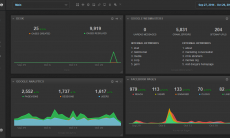I’m in Brazil to follow the 2014 FIFA World Cup, and I’m overwhelmed by the exuberance of flags, country colors and languages on the streets of São Paulo. São Paulo is probably one of the most ethnically diverse cities in the world, but most of the groups composing that mix arrived here more than a half-century ago, so if you live in Brazil and are under 50, no matter if your family name is Kim, Andrade, Gutierrez, Sato, Schneider, Gaziri or Matarazzo, chances are that you were born here and feel much more Brazilian than Korean, Portuguese, Spanish, Japanese, German, Turkish or Italian. The World Cup is a good acid test for that: even though I’m the son of a Korean dad and Japanese mother, it does not even occur to me to cheer for one of those countries instead of supporting Brazil. Diversity of thought and diversity of looks do not necessarily go hand-in-hand here. As the Borg Queen would proudly say, “Assimilation is now complete.”

But how does diversity happen in the first place? Barriers play a major role in creating it. The Galapagos Islands are fascinating proof of that, with all the variations of related species from island to island. The multitude of dialects in countries with natural separators like mountain chains also suggest that. As Darwin theorized back in the 19th century, nothing is better than diversity for survival in the long term. When disaster strikes, diversity improves the chances that at least a few will survive and thrive.
On the other hand, barriers are not that great in the short term. They make everything difficult, and foster the creation of silos or echo chambers where the world is just an oyster, and progress happens very slowly. In an ideal world, there should be an equilibrium between preserving diversity and our individual quirks and still accepting those of others with open arms.
The use of communication tools inspired by social media titans is often touted as the Holy Grail of collaboration: social business is supposed to destroy silos and create this brave new world where information flows freely from where it is created to where it is needed. And that is really great in the short term, but similar to new ecosystems, this barrier-free environment is fragile and subject to opportunistic species dominating and suffocating its immense potential for a balanced, robust and self-sustained collaboration system.
The main indication of that happening to your social business platform is a steep power law distribution of contributors, where 1% of your user base posts 90% of all content. While that pattern is normal in the early days of an implementation, it should gradually move to a more balanced distribution as users start getting familiar with it. You should make sure your platform goes beyond early adopters and conquers the average person who does not necessarily eat and breathe social media 24 hours a day. Once that happens, ensure that it’s OK to have respectful disagreement happening that: diversity of thoughts will be a key survival factor for your organization in the long term. If you fail, rather than leveraging the elusive wisdom of crowds, you may end up with the idiosyncrasies of the loudest.






